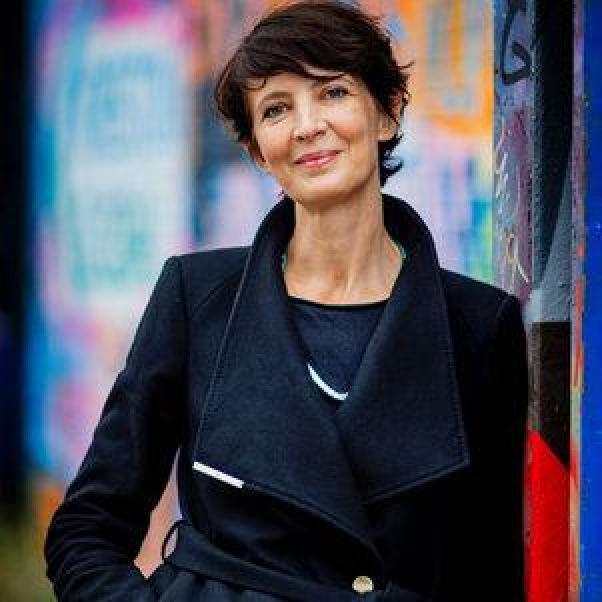
Prof dr. Bregje van Eekelen is Full Professor of Design, Culture and Society at the faculty of Industrial Design Engineering at Delft University of Technology. Van Eekelen’s work is located at the intersection of art, design and technology. She combines methods from cultural anthropology and history to understand the connection between the present, the past and the future. In June 2023, she received a second appointment as Leiden-Delft-Erasmus professor at the Erasmus University Rotterdam. The chair ‘Smart City Design – Design, Culture and Society’ is embedded at the Leiden-Delft-Erasmus Centre for BOLD Cities and established by the Erasmus School for Social and Behavioural Sciences.
Can you tell us more about your academic background and expertise?
I once upon a time studied Anthropology and Economics. At the time, economists were seen as the arch enemy of anthropology, as they seemed to lack any understanding of culture. I noticed that anthropologists, on the other hand, did not speak the language of economists, so, I thought, if I want to convince an economist, I should speak their language. I moved to the University of California, Santa Cruz, USA to get a PhD in Anthropology and it was there my theoretical socks were knocked off. For instance, I got acquainted with more-than-human approaches in the social sciences. Afterwards, I got interested in the history of traveling knowledge, especially social science concepts. This is also relevant in the context of the Centre of BOLD Cities. What worlds are you drawing on when you use concepts like living laboratory, participation, prototyping, or creativity, to name a few? I developed a methodology that combines anthropology and history to the study of concepts to engage them critically and productively in both the past and the present. I am leveraging that methodology as a Chair of Design, Culture and Society at Delft University of Technology, and now also as Leiden-Delft-Erasmus professor at the Centre for BOLD Cities.
Why do you think an interdisciplinary approach is important?
I actually don't think an interdisciplinary approach is good in and of itself. It is a means, not an end. So, what methods you use depends on the kinds or materials and questions you are interested in. In my case, I am interested in the ‘designerly’ or social science concepts that we use-- be it platforms, creativity, scaling. To study their present use, it helps to know the histories that they draw from. But it is also fascinating to see what they do in the present, so you can use ethnography, while drawing on the historical entanglements that they carry forward.
I am currently working a lot on the history of social science in design, and on the kinds of human (the patchwork human I call it) that this discipline has bodied forth. That also means you need to know more about, for instance, the history of ergonomics and the history of capitalism. So, given that at least my part of the world does not seem to fit easily within one discipline, an interdisciplinary approach is called for. This is also why, together with the Rotterdam Arts and Science Lab, we have developed Delta Studies - studies that combine alpha, beta, gamma studies with artistic research, and which is focused on the future of the Rotterdam Delta.
How did you get involved with the Centre for BOLD Cities and what does it mean to you?
I have been tiptoeing around the Centre for BOLD Cities since its inception. I tiptoed as I was unsure if it required a degree in AI (which I do not plan on having). But this is exactly the mission of the Centre as I understand it: to unpack current approaches to urban issues and recharge them. It is a place in which technology, social science, and the humanities really come together – and clash – to forge new understandings and new approaches to our future world. I also see the Centre for BOLD Cities as an experimental institute. It is unusually embedded in what we call society (not just on paper, but in practice). And it is a place where new approaches, either ‘designerly’, or for instance more-than-human understandings of the delta, can be tinkered with.
But this is exactly the mission of the Centre as I understand it: to unpack current approaches to urban issues and recharge them. It is a place in which technology, social science, and the humanities really come together – and clash – to forge new understandings and new approaches to our future world.
Do you have a book/podcast/film which inspires you that you would like to share with us?
Yes, a podcast: 99% invisible. It takes a banal thing, like barcodes or barbed wire, and it opens up the social worlds and histories that are tied into them. You will learn about things you did not know you wanted to know anything about, like Kodak's color code, shopping malls, or hostile design. And your world will never be the same.
For episodes of and more information about the 99% invisible podcast, visit www.99percentinvisible.org
